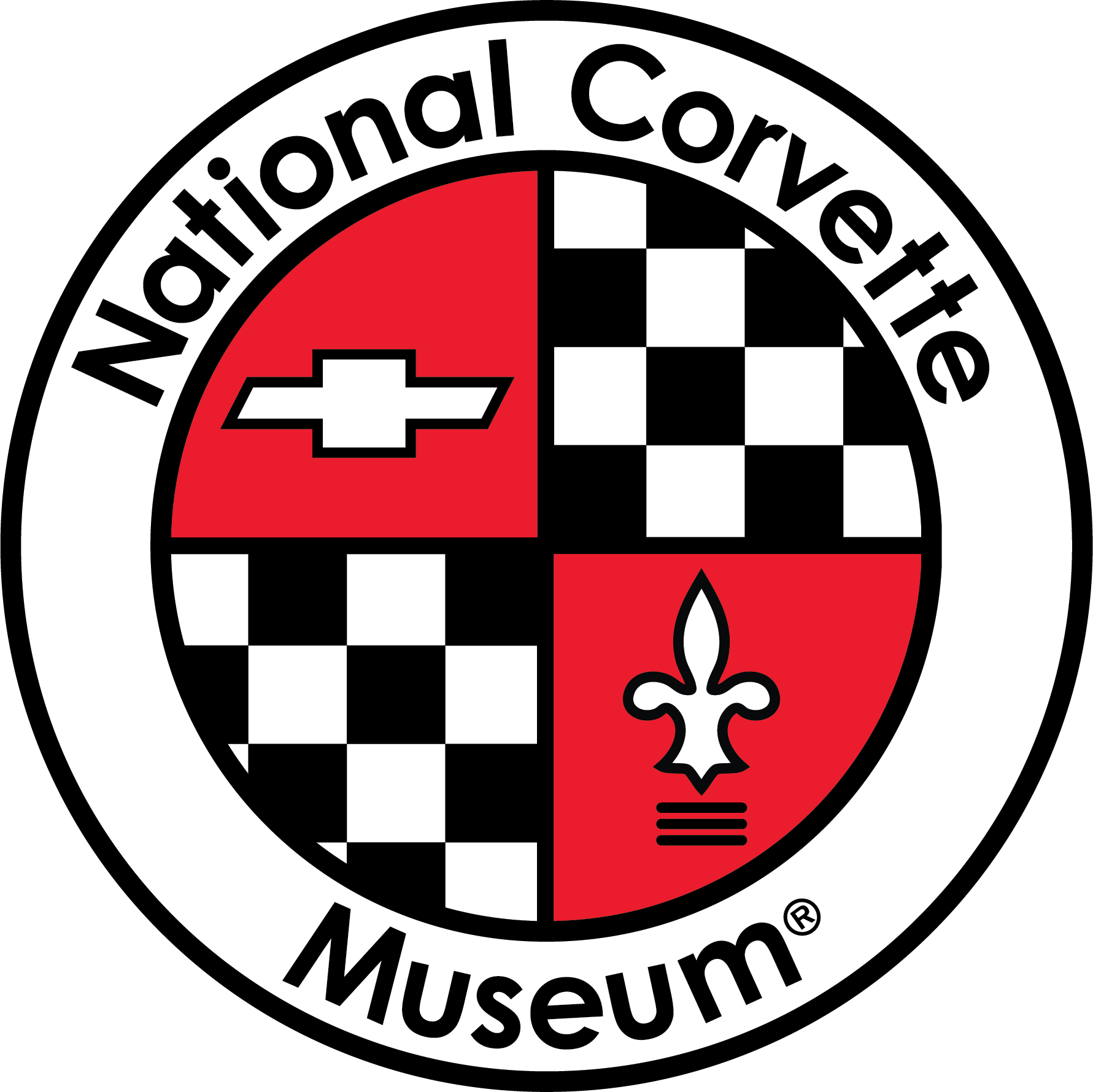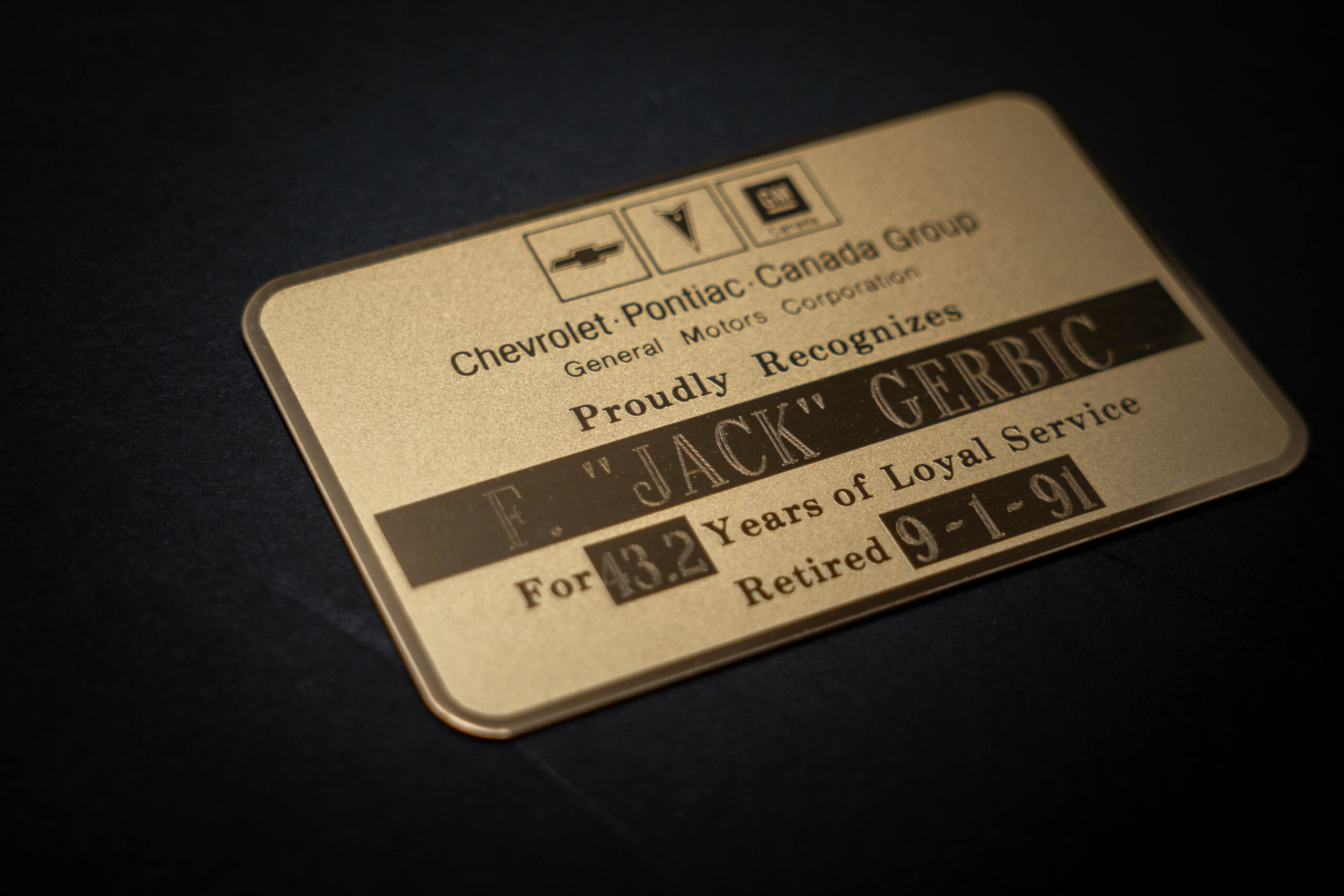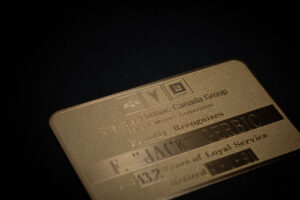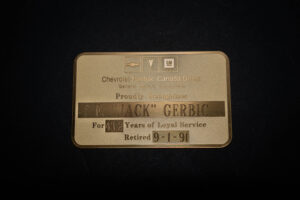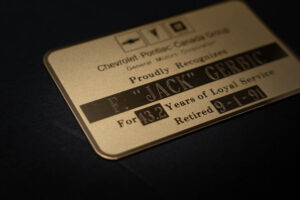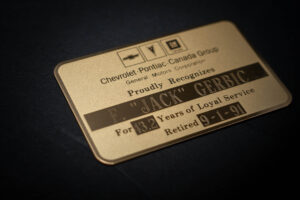Francis “Jack” Gerbic began his career with General Motors in 1948, building wooden station wagon bodies in Euclid, Ohio with Fisher Body. By the time Gerbic retired in 1991, he had risen to become Production Manager for GM’s Corvette plant in Bowling Green, Kentucky. In recognition of his long career at GM, Gerbic’s colleagues presented him with this gold-colored badge. Donated by Jack’s family, the badge is a token of thanks for a “43.2-year” professional journey in the auto industry.
Gerbic’s career is deeply intertwined with the movement of Corvette production to Bowling Green. In 1971, he became Quality Control Director of GM’s St. Louis plant, where Corvettes had been built since 1954. As Corvette production steadily increased throughout the decade, Gerbic became aware that the line could move to a new facility, but GM was unsure about where it would go. While the company explored its options, Gerbic joined the team tasked with evaluating new locations for a standalone Corvette plant. One of their options was a former Chrysler Airtemp plant, located just off Interstate 65 in South Central Kentucky.
Gerbic thought the Bowling Green plant would be a suitable new home for Corvette. It was easily accessible from both the highway and a nearby railroad spur. Plus, the building already existed. Although GM would have to build a new production line inside the factory, that was better than creating a whole new plant from scratch. Gerbic also recalled that he received a warm welcome from the Bowling Green Chamber of Commerce, which became another point in the town’s favor.
GM’s upper management agreed with Gerbic’s assessment. On March 11, 1980, the company made an official announcement for the Bowling Green community about Corvette’s impending move. Gerbic and his team shifted to planning the logistics of the move, structuring the plant’s staff, and hiring and training new personnel. Gerbic also helped to develop a new painting process at the Bowling Green plant. Although 1981 model year Corvettes were built in Bowling Green and St. Louis, only the Bowling Green Corvettes used the new system.
When Gerbic received his retirement badge, the plant he helped to choose had already been building Corvettes for 10 years. The National Corvette Museum would open three years later, firmly entrenching the past, present, and future of the Corvette in Bowling Green.
